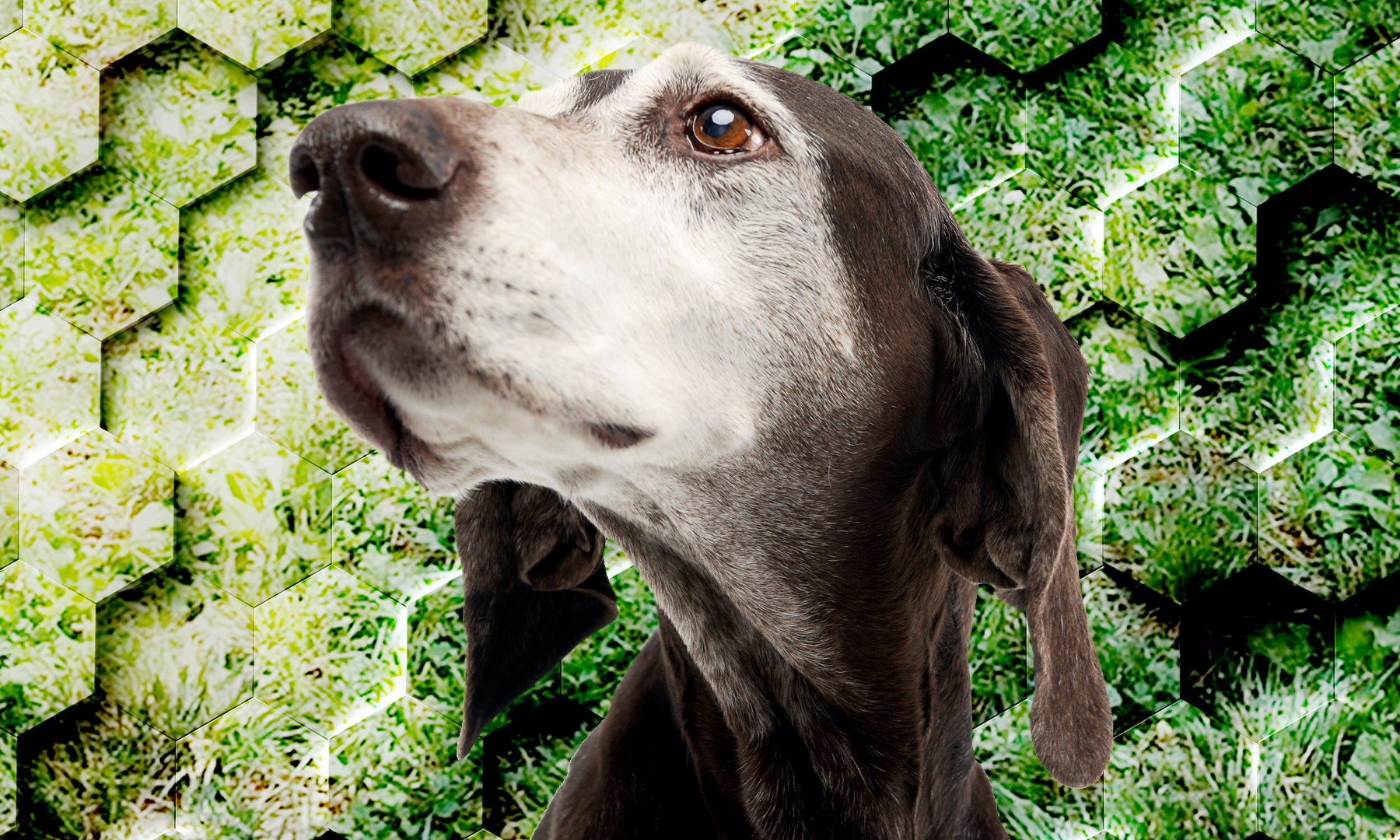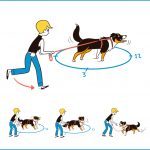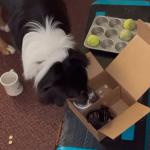The Power of Pattern
I have a new refrigerator!
Other than being a dandy receptacle for storing my dogs’ food, what does a fridge have to do with dog training you may ask? Stick with me for a moment…
I’ve always kept my dish towel on a magnetic hook on the side of the fridge. However, my new appliance is a different size and shape from the old one, so the hook with the dish towel is 6 inches from where it used to be. My pattern is so well-established that even though I’m reaching for air, I stop where the towel used to be. I have to make a conscious effort to reach for the towel in its new location.
Behold the power of pattern. For years, I practiced walking to a specific place to get my dish towel. Now I have to learn a new pattern.
Patterns are great! Until the new fridge they made it possible for me to find the dish towel before I’d had my morning coffee. A few short weeks and I’ll be able to do so again.
Patterns are terrible! A former smoker, for years the rituals and rhythms of cigarettes were an integral part of my waking hours. It was a lengthy struggle to change that pattern.
The same is true for our dogs.
Our dogs have patterns that function to help them address their daily challenges. Not all of those patterns serve them well, though. Three of those patterns might include:
- Reactive behavior
Lunging, barking, and pulling on lead in response to the appearance of something our dogs fear creates a big display. This pattern often results in the object of our dogs’ concern moving away, but at a considerable cost to their well-being. The more well-practiced this behavior pattern is, the more likely it becomes, and it can take a heavy toll on their physical and behavioral health.
- Resource guarding
It’s natural for our dogs to want to protect their treasures, just as it is for us to do the same. We humans lock our cars, our front doors, and keep our valuables in safes or lockboxes. Our dogs take a special chew to their bed, or move to a private corner to protect and enjoy their treasure in peace. The challenge comes when their patterns of protection put them into conflict with us, or even with their own safety. We’re familiar with snapping, snarling, or growling over a resource, or running away with it, but they might also ingest their valued item rather than give it up.
- Jumping
Who doesn’t love a warm greeting when returning home from an errand or a work session? I’ll confess that I’ve reinforced my dog’s pattern of jumping to ask me about my day. That said, not everybody loves a canine “hug” in greeting, and so we are doing remedial work in building alternative patterns.
Which brings me to the good news! Rather than pushing back against undesirable patterns—which often serves only to make them stronger, and can erode our relationship with our dogs—we can teach alternative strategies to address our dogs’ needs in ways that are more productive for everybody. Teaching desirable patterns helps our dogs practice behavior that can hold them in good stead in a variety of situations.
Let’s take a look at a few replacement patterns: fodder for your own creativity in addressing your dog’s needs.
- Click for Looking
In this game your dog learns that looking to you when things are happening is a much more rewarding pattern than freaking out. Build a predictable pattern for your dog by working at a distance where she is not lunging and barking and pulling, but is able to think and learn. In this structured game your dog looks at the thing that she’s worried about (the “trigger”), and as she does you click (with a mechanical clicker) or say a “clicker word”, and follow with a treat. The trigger could be something she’s worried about such as another dog or a skateboard, or it could even be someone she’s so happy to greet that she’s overwhelmed and overwhelming!When she looks at the trigger you click and follow with a really excellent treat Every Single Time. The clicker or clicker word “marks” her behavior of calmly looking at the worrisome thing, and the treat pays her for that excellent performance. If she doesn’t begin to look back toward you when she hears the “click” you’re probably too close. Add some distance, and begin again. A few successful repetitions are much more valuable in building a new pattern than a lot of semi-successful ones, so keep your training session short and sweet.
This approach has several “flavors” and names: variations that several well-regarded trainers have found particularly effective. Leslie McDevitt’s Control Unleashed training books, DVDs, and webinars include her “Look at That” protocol. Emma Parsons’ Click to Calm book includes the “Click for Looking” protocol. Alice Tong has an excellent flyer on her “Engage-Disengage” game in her blog.
- Find It
There are a number of wonderful protocols for building new patterns surrounding the treasures that our dogs guard, such as Chirag Patel’s famous “Drop” and “Counting Game”.One simple but remarkably powerful game is “Find It”! Often overlooked, this game teaches your dog to look for a tossed treat every time you say “find it”. Did your dog steal your sock? A well-practiced “Find It” pattern goes a long way to guiding your dog away from the sock while he sniffs out tossed treats.
Introducing this game is straightforward: say “find it” and then toss a treat. Repeat in rapid succession as your dog lifts his head from eating each treat.
Check out our really short video on “Find It”, and download our Training Tip.
- Don’t Jump on Grandma
I’ll confess that our “Don’t Jump on Grandma” keeps showing up in our blog! That’s because the “DJOG” pattern can be so effective that it looks like a magic trick.The principle is simple. When Jane the Jumper—who is delighted to see us—comes running toward us, we want to reward her for having four paws on the floor rather than waiting for her to jump and trying to “correct” the behavior. For many dogs the attention, conversation, and contact that come from our saying “no don’t jump” and pushing them off are highly rewarding.
Many of us inadvertently teach our dogs another pattern, which is to come running toward us and jump on us, and when we say “off” to put all their paws on the ground. This pattern does get all four paws on the ground, but it doesn’t take care of that little jumping issue.
Instead, as Jane comes toward you and before she jumps, click or say a “clicker word” and toss a treat on the floor for her to eat before she jumps on you. As she turns back toward you click again and toss another treat. Keep this pattern going until she begins to offer a new behavior such as a sit or a quiet stand.
Check out our Don’t Jump on Grandma Training Tip!
With the change of the year I like to look at what serves us well, and where a pattern could use improvement or replacement. It’s a great time to see how I can make my interactions with my dogs better for us all.
These are just three examples of ways that we can build alternative patterns to help our dogs with some of their challenges. Asking a few questions can help you build new and better patterns with your own dogs:
- What is the reward or benefit my dog is getting from her current pattern? Some of the answers might include attention, the opportunity to get information (such as sniffing your breath to find out what you had for lunch!), or a release of energy or anxiety.
- What is a more desirable way for her to receive the same or similar benefit? One example would be to engage her in a game of tug, or to ask her to do her favorite trick when you come in the door, to give her the desired attention, and to let her burn off a bit of energy.
- Can I teach her a pattern I like that is incompatible with the pattern that’s not serving us well?Sitting or going to a place such as a low platform or mat gives your dog a thing to do when happy about your return that doesn’t involve jumping.
Keep an eye out for an end-of-month blog in which we use enrichment to provide a productive focus for our dogs’ energy, and help them choose more effective patterns!




